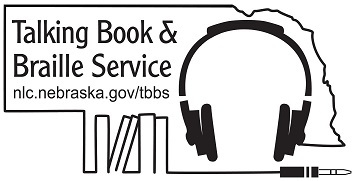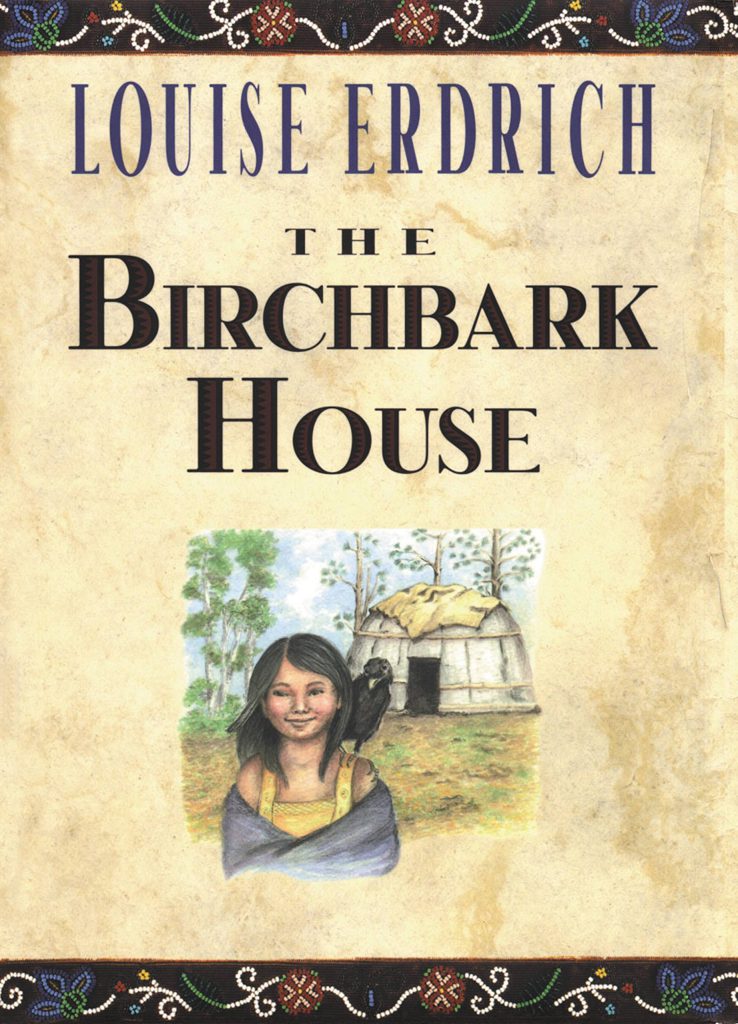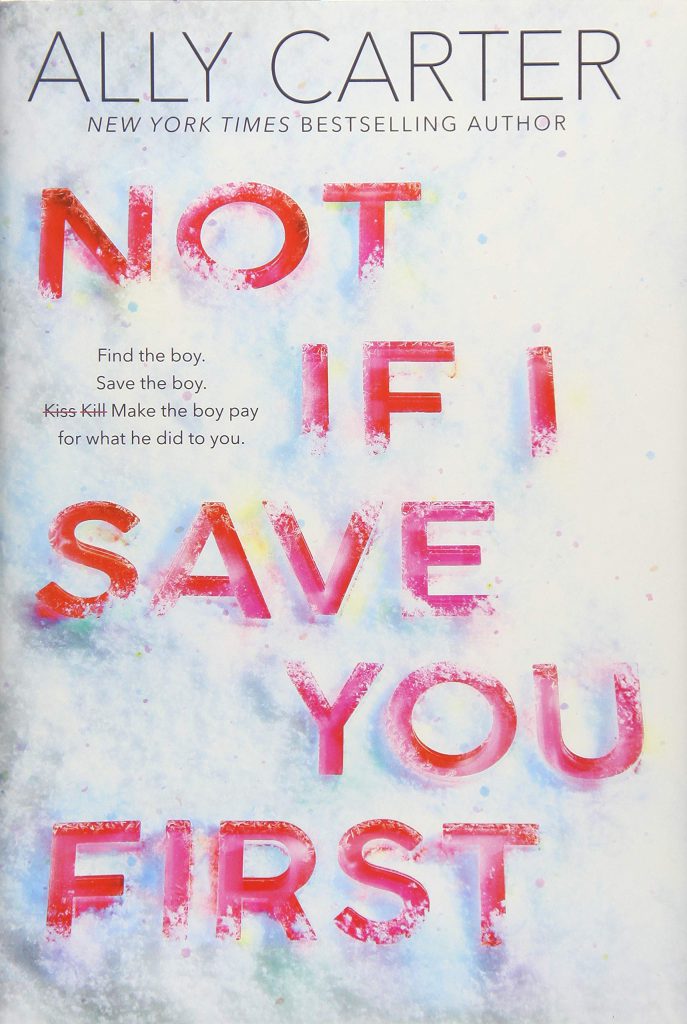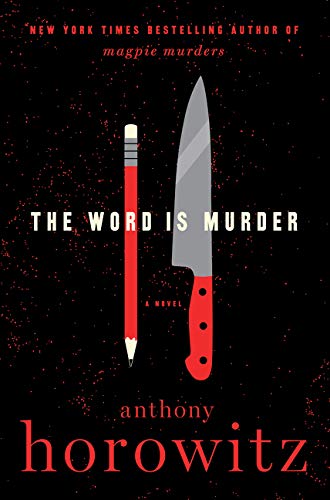Search the Blog
Categories
- Books & Reading
- Broadband Buzz
- Census
- Education & Training
- Friday Reads
- General
- Grants
- Information Resources
- Library Management
- Nebraska Center for the Book
- Nebraska Libraries on the Web
- Nebraska Memories
- Now hiring @ your library
- Preservation
- Pretty Sweet Tech
- Programming
- Public Library Boards of Trustees
- Public Relations
- Talking Book & Braille Service (TBBS)
- Technology
- Uncategorized
- What's Up Doc / Govdocs
- Youth Services
Archives
Subscribe
Category Archives: Books & Reading
#BookFaceFriday “How to Find Love in a Bookshop” by Veronica Henry
Love in the time of #BookFace!
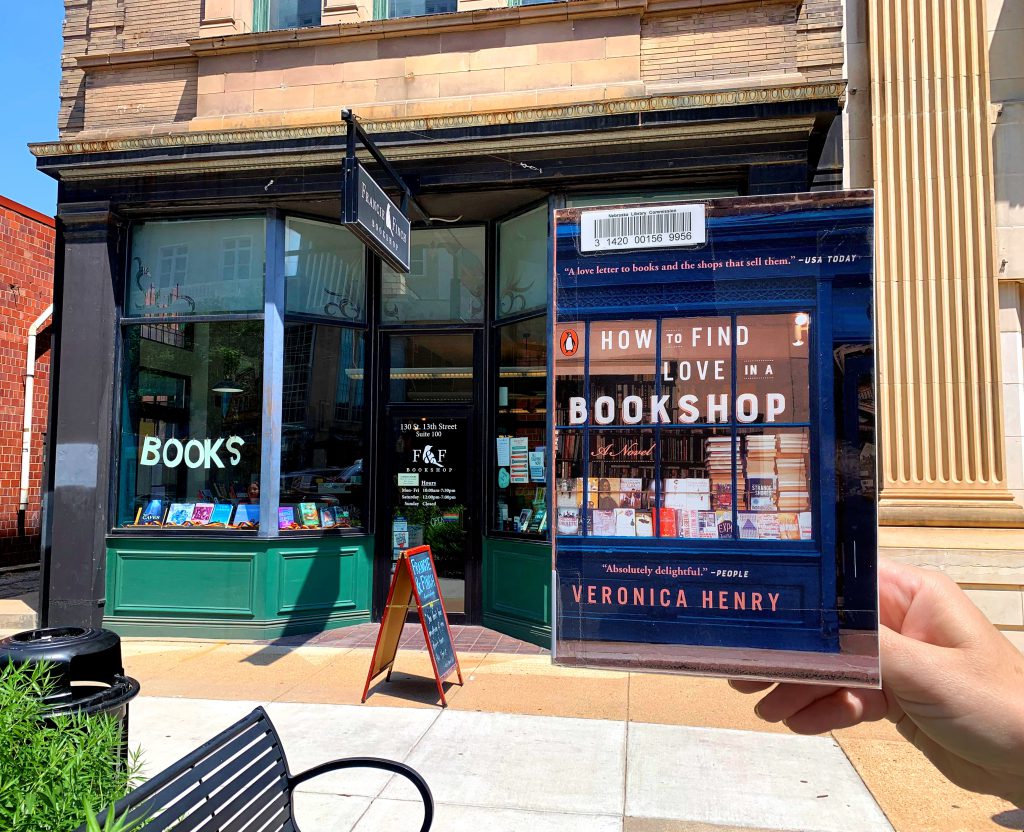
We can’t help it, we’re a little partial to Bookstores and this week’s #BookFaceFriday! Described as “A love letter to books and the shops that sell them,” we thought this week’s title was a perfect fit for one of our favorite local bookshops! “How to Find Love in a Bookshop: A Novel” by Veronica Henry (Penguin Books, 2018) is available as a Book Club Kit as well as an ebook and audiobook in Nebraska OverDrive Libraries.
“Henry describes her novel as an ode to bookshops, and it is that. . . Readers who laughed and cried over Gabrielle Zevin’s The Storied Life of A.J. Fikry and Fredrik Backman’s A Man Called Ove will love this one.”
— Library Journal
Book Club Kits Rules for Use
- These kits can be checked out by the librarians of Nebraska libraries and media centers.
- Circulation times are flexible and will be based upon availability. There is no standard check-out time for book club kits.
- Please search the collection to select items you wish to borrow and use the REQUEST THIS KIT icon to borrow items.
- Contact the Information Desk at the Library Commission if you have any questions: by phone: 800/307-2665, or by email: Information Services Team
Find this title and many more through Nebraska OverDrive! Libraries participating in the Nebraska OverDrive Libraries Group currently have access to a shared and growing collection of digital downloadable audiobooks and eBooks. 189 libraries across the state share the Nebraska OverDrive collection of 21,696 audiobooks, 35,200 eBooks, and 3,964 magazines. As an added bonus it includes 130 podcasts that are always available with simultaneous use (SU), as well as SU ebooks and audiobook titles that publishers have made available for a limited time. If you’re a part of it, let your users know about this great title, and if you’re not a member yet, find more information about participating in Nebraska Overdrive Libraries!
Love this #BookFace & reading? Check out our past #BookFaceFriday photos on the Nebraska Library Commission’s Facebook page!
Book Briefs: New University of Nebraska Press Books at the Nebraska Publications Clearinghouse
The Nebraska Publications Clearinghouse receives documents every month from all Nebraska state agencies, including the University of Nebraska Press (UNP). Each month we will be showcasing the UNP books that the Clearinghouse has received.
UNP books, as well as all Nebraska state documents, are available for checkout by libraries and librarians for their patrons.
Here are the UNP books the Clearinghouse received in May and June, 2023:
Agriculture in the Midwest, 1815-1900, by R. Douglas Hurt.
After the War of 1812 and the removal of the region’s Indigenous peoples, the American Midwest became a paradoxical land for settlers. Even as many settlers found that the region provided the bountiful life of their dreams, others found disappointment, even failure—and still others suffered social and racial prejudice.
In this broad and authoritative survey of midwestern agriculture from the War of 1812 to the turn of the twentieth century, R. Douglas Hurt contends that this region proved to be the country’s garden spot and the nation’s heart of agricultural production. During these eighty-five years the region transformed from a sparsely settled area to the home of large industrial and commercial cities, including Chicago, Milwaukee, Cleveland, and Detroit. Still, it remained primarily an agricultural region that promised a better life for many of the people who acquired land, raised crops and livestock, provided for their families, adopted new technologies, and sought political reform to benefit their economic interests. Focusing on the history of midwestern agriculture during wartime, utopian isolation, and colonization as well as political unrest, Hurt contextualizes myriad facets of the region’s past to show how agricultural life developed for midwestern farmers—and to reflect on what that meant for the region and nation.
The First Migrants : How Black Homesteaders’ Quest for Land and Freedom Heralded America’s Great Migration, by Richard Edwards and Jacob K. Friefeld.
The First Migrants recounts the largely unknown story of Black people who migrated from the South to the Great Plains between 1877 and 1920 in search of land and freedom. They exercised their rights under the Homestead Act to gain title to 650,000 acres, settling in all of the Great Plains states. Some created Black homesteader communities such as Nicodemus, Kansas, and DeWitty, Nebraska, while others, including George Washington Carver and Oscar Micheaux, homesteaded alone. All sought a place where they could rise by their own talents and toil, unencumbered by Black codes, repression, and violence. In the words of one Nicodemus descendant, they found “a place they could experience real freedom,” though in a racist society that freedom could never be complete. Their quest foreshadowed the epic movement of Black people out of the South known as the Great Migration.
In this first account of the full scope of Black homesteading in the Great Plains, Richard Edwards and Jacob K. Friefeld weave together two distinct strands: the narrative histories of the six most important Black homesteader communities and the several themes that characterize homesteaders’ shared experiences. Using homestead records, diaries and letters, interviews with homesteaders’ descendants, and other sources, Edwards and Friefeld illuminate the homesteaders’ fierce determination to find freedom—and their greatest achievements and struggles for full equality.
French St. Louis : Landscapes, Contexts, and Legacy, Edited by Jay Gitlin, Robert Michael Morrissey, and Peter J. Kastor. Series: France Overseas: Studies in Empire and Decolonization
A gateway to the West and an outpost for eastern capital and culture, St. Louis straddled not only geographical and political divides but also cultural, racial, and sectional ones. At the same time, it connected a vast region as a gathering place of peoples, cultures, and goods. The essays in this collection contextualize St. Louis, exploring French-Native relations, the agency of empire in the Illinois Country, the role of women in “mapping” the French colonial world, fashion and identity, and commodities and exchange in St. Louis as part of a broader politics of consumption in colonial America. The collection also provides a comparative perspective on America’s two great Creole cities, St. Louis and New Orleans. Lastly, it looks at the Frenchness of St. Louis in the nineteenth century and the present.
French St. Louis recasts the history of St. Louis and reimagines regional development in the early American republic, shedding light on its francophone history.
Hoarding New Guinea : Writing Colonial Ethnographic Collection Histories for Postcolonial Futures, by Rainer F. Buschmann. Series: Critical Studies in the History of Anthropology
Hoarding New Guinea provides a new cultural history of colonialism that pays close attention to the millions of Indigenous artifacts that serve as witnesses to Europe’s colonial past in ethnographic museums. Rainer F. Buschmann investigates the roughly two hundred thousand artifacts extracted from the colony of German New Guinea from 1870 to 1920. Reversing the typical trajectories that place ethnographic museums at the center of the analysis, he concludes that museum interests in material culture alone cannot account for the large quantities of extracted artifacts.
Buschmann moves beyond the easy definition of artifacts as trophies of colonial defeat or religious conversion, instead employing the term hoarding to describe the irrational amassing of Indigenous artifacts by European colonial residents. Buschmann also highlights Indigenous material culture as a bargaining chip for its producers to engage with the imposed colonial regime. In addition, by centering an area of collection rather than an institution, he opens new areas of investigation that include non-professional ethnographic collectors and a sustained rather than superficial consideration of Indigenous peoples as producers behind the material culture. Hoarding New Guinea answers the call for a more significant historical focus on colonial ethnographic collections in European museums.
The Korean War Remembered : Contested Memories of an Unended Conflict, by Michael J. Devine. Series: Studies in War, Society, and the Military
Michael J. Devine provides a fresh, wide-ranging, and international perspective on the contested memory of the 1950–1953 conflict that left the Korean Peninsula divided along a heavily fortified demilitarized zone. His work examines “theaters of memory,” including literature, popular culture, public education efforts, monuments, and museums in the United States, China, and the two Koreas, to explain how contested memories have evolved over decades and how they continue to shape the domestic and foreign policies of the countries still involved in this unresolved struggle for dominance and legitimacy. The Korean War Remembered also engages with the revisionist school of historians who, influenced by America’s long nightmare in Vietnam, consider the Korean War an unwise U.S. interference in a civil war that should have been left to the Koreans to decide for themselves.
As a former Peace Corps volunteer to Korea, a two-time senior Fulbright lecturer at Korean universities, and former director of the Harry S. Truman Presidential Library, Devine offers the unique perspective of a scholar with half a century of close ties to Korea and the Korean American community, as well as practical experience in the management of historical institutions.
The Mobilized American West, 1940-2000, by John M. Findlay. Series: History of the American West
In the years between 1940 and 2000, the American Far West went from being a relative backwater of the United States to a considerably more developed, modern, and prosperous region—one capable of influencing not just the nation but the world. By the dawn of the twenty-first century, the population of the West had multiplied more than four times since 1940, and western states had transitioned from rural to urban, becoming the most urbanized section of the country. Massive investment, both private and public, in the western economy had produced regional prosperity, and the tourism industry had undergone massive expansion, altering the ways Americans identified with the West.
In The Mobilized American West, 1940–2000, John M. Findlay presents a historical overview of the American West in its decades of modern development. During the years of U.S. mobilization for World War II and the Cold War, the West remained a significant, distinct region even as its development accelerated rapidly and, in many ways, it became better integrated into the rest of the country. By examining events and trends that occurred in the West, Findlay argues that a distinctive, region-wide political culture developed in the western states from a commitment to direct democracy, the role played by the federal government in owning and managing such a large amount of land, and the way different groups of westerners identified with and defined the region. While illustrating western distinctiveness, Findlay also aims to show how, in its sustaining mobilization for war, the region became tethered to the entire nation more than ever before, but on its own terms. Findlay presents an innovative approach to viewing the American West as a region distinctive of the United States, one that occasionally stood ahead of, at odds with, and even in defiance of the nation.
My Side of the River : an Alaska Native Story, by Elias Kelly. Series: American Indian Lives
In 1971 the U.S. government created the Alaska Native Claims Settlement Act and extinguished Alaska Native aboriginal rights to hunting and fishing—forever changing the way Alaska Natives could be responsible for their way of life. The Alaska Department of Fish and Game and the U.S. Fish and Wildlife Service claimed all wildlife management responsibility and have since told Natives when, where, and how to fish, hunt, and harvest according to colonial management doctrines. We need only look at our current Alaska salmon conditions to see how these management efforts have worked.
In My Side of the River, agricultural specialist Elias Kelly (Yup’ik) relates how traditional Native subsistence hunting is often unrecognized by government regulations, effectively criminalizing those who practice it. Kelly alternates between personal stories of friends, family, and community and legal attempts to assimilate Native Alaskans into white U.S. fishing and hunting culture. He also covers landownership, incorporation of Alaska residents, legal erasure of Native identity, and poverty rates among Native Alaskans. In this memoir of personal and public history, Kelly illuminates the impact of government regulations on traditional life and resource conservation.
Remembering World War I in American, by Kimberly J. Lamay Licursi. Series: Studies in War, Society, and the Military
Poised to become a significant player in the new world order, the United States truly came of age during and after World War I. Yet many Americans think of the Great War simply as a precursor to World War II. Americans, including veterans, hastened to put experiences and memories of the war years behind them, reflecting a general apathy about the war that had developed during the 1920s and 1930s and never abated.
In Remembering World War I in America Kimberly J. Lamay Licursi explores the American public’s collective memory and common perception of World War I by analyzing the extent to which it was expressed through the production of cultural artifacts related to the war. Through the analysis of four vectors of memory—war histories, memoirs, fiction, and film—Lamay Licursi shows that no consistent image or message about the war ever arose that resonated with a significant segment of the American population. Not many war histories materialized, war memoirs did not capture the public’s attention, and war novels and films presented a fictional war that either bore little resemblance to the doughboys’ experience or offered discordant views about what the war meant. In the end Americans emerged from the interwar years with limited pockets of public memory about the war that never found compromise in a dominant myth.
The Visible Hands That Feed : Responsibility and Growth in the Food Sector, by Ruzana Liburkina. Series: Our Sustainable Future
The Visible Hands That Feed provides crucial insights into the rifts and regularities that are characteristic of today’s food systems. These insights attend to the widespread disquiet about the ethics and politics of food production and trade. While challenging utopian thinking, these findings give hope by elaborating on the promising nature of what falls between political and moral agendas.
In The Visible Hands That Feed Ruzana Liburkina approaches the food sector against the backdrop of its pivotal role for social and ecological relations to trace the potentials and limitations for sustainable change from within. Drawing on the results of ethnographic fieldwork in Europe and South America, Liburkina conducts an in-depth exploration of the practices, visions, concerns, and relationships that unfold at the very locations where food is grown, processed, stored, and served. By scrutinizing two critical notions in relation to sustainability—responsibility and growth—Liburkina offers insights into how sustainable change might be understood and further supported. In this first study of food production and provisioning that is grounded in participant observation in four types of food sector enterprises—farms, food processing companies, foodservice distributors, and public caterers—Liburkina fills an important gap in the literature on sustainable futures by offering detailed and diverse empirical insights into corporate food production and provisioning.
When Women Ruled the Pacific : power and Politics in Nineteenth-Century Tahiti and Hawai’i, by Joy Schulz. Series: Studies in Pacific Worlds
Throughout the nineteenth century British and American imperialists advanced into the Pacific, with catastrophic effects for Polynesian peoples and cultures. In both Tahiti and Hawai‘i, women rulers attempted to mitigate the effects of these encounters, utilizing their power amid the destabilizing influence of the English and Americans. However, as the century progressed, foreign diseases devastated the Tahitian and Hawaiian populations, and powerful European militaries jockeyed for more formal imperial control over Polynesian waystations, causing Tahiti to cede rule to France in 1847 and Hawai‘i to relinquish power to the United States in 1893.
In When Women Ruled the Pacific Joy Schulz highlights four Polynesian women rulers who held enormous domestic and foreign power and expertly governed their people amid shifting loyalties, outright betrayals, and the ascendancy of imperial racism. Like their European counterparts, these Polynesian rulers fought arguments of lineage, as well as battles for territorial control, yet the freedom of Polynesian women in general and women rulers in particular was unlike anything Europeans and Americans had ever seen. Consequently, white chroniclers of contact had difficulty explaining their encounters, initially praising yet ultimately condemning Polynesian gender systems, resulting in the loss of women’s autonomy. The queens’ successes have been lost in the archives as imperial histories and missionary accounts chose to tell different stories. In this first book to consider queenship and women’s political sovereignty in the Pacific, Schulz recenters the lives of the women rulers in the history of nineteenth-century international relations.
**Pictures and Synopses courtesy of University of Nebraska Press.
Posted in Books & Reading, Education & Training, General, Information Resources, What's Up Doc / Govdocs
Tagged Book Covers, books, Reading
Leave a comment
Friday Reads — Atlas : The Story of Pa Salt, by Lucinda Riley and Harry Whittaker
Earlier this year, I read and did a Friday Reads post about The Seven Sisters series by Lucinda Riley. Atlas : The Story of Pa Salt is the 8th book in that series, released in May of this year after a two-year gap, and let me tell you, it was worth the wait! Sadly, Lucinda Riley died of oesophageal cancer in 2021, and her son, Harry Whittaker, completed this final book in the series. And once again, it does not disappoint. Spanning a lifetime of love and loss, crossing borders and oceans, Atlas: The Story of Pa Salt, draws Lucinda Riley’s saga to its stunning, unforgettable conclusion. I listened to the audio version and was amazed at how masterfully all of the pieces of the seven previous books came together. I won’t say more, because to do so would give away too much, but trust me when I say–this book was a non-stop page-turner!
1928, Paris. A boy is found, moments from death, and taken in by a kindly family. Gentle, precocious, talented, he flourishes in his new home, and the family show him a life he hadn’t dreamed possible. But he refuses to speak a word about who he really is.
As he grows into a young man, falling in love and taking classes at the prestigious Conservatoire de Paris, he can almost forget the terrors of his past, or the promise he has vowed to keep. But across Europe an evil is rising, and no-one’s safety is certain. In his heart, he knows the time will come when he must flee once more.
2008, the Aegean. The seven sisters are gathered together for the first time, on board the Titan, to say a final goodbye to the enigmatic father they loved so dearly.
To the surprise of everyone, it is the missing sister who Pa Salt has chosen to entrust with the clue to their pasts. But for every truth revealed, another question emerges. The sisters must confront the idea that their adored father was someone they barely knew. And even more shockingly: that these long-buried secrets may still have consequences for them today. In this epic conclusion to the Seven Sisters series, everything will be revealed! [Audible]
2024 ‘One Book For Nebraska Kids & Teens’ Titles Selected
The Nebraska Library Commission is excited to announce the 2024 titles selected for the One Book For Nebraska Kids & Teens program:
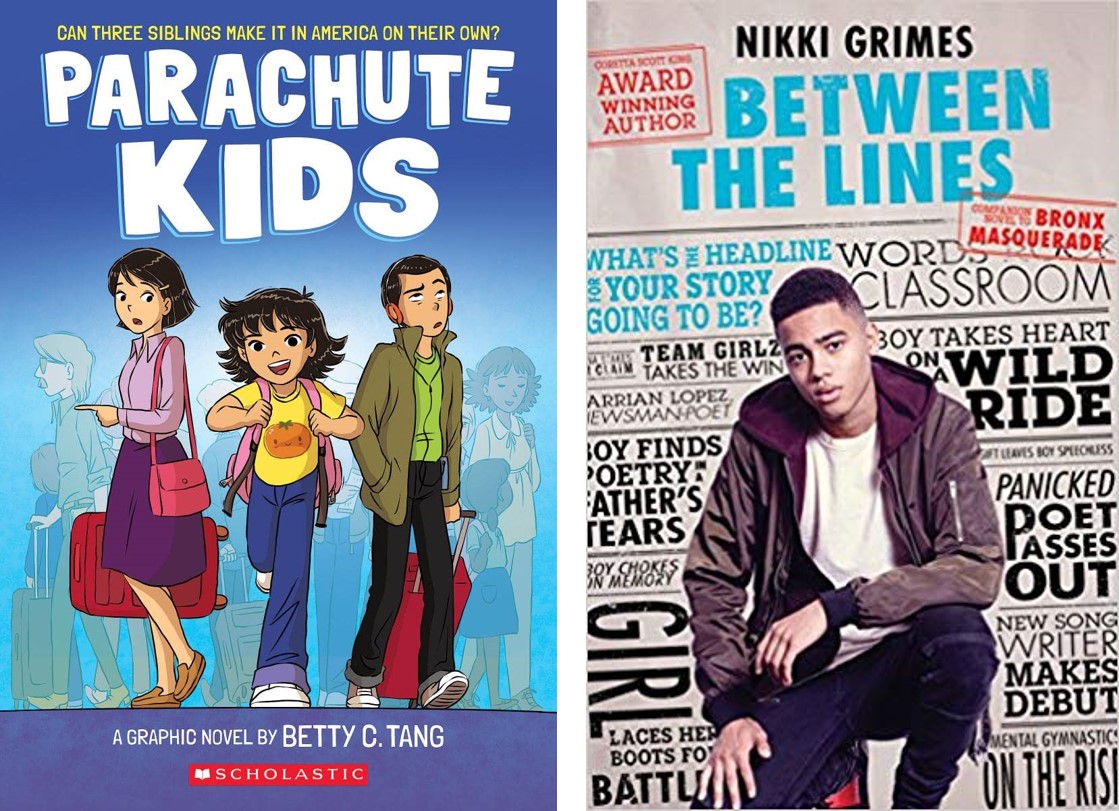
Wouldn’t it be great if kids all over Nebraska were talking about books? And wouldn’t it be even better if those kids were talking about the SAME book? Hold on to your bookmarks, the Nebraska Library Commission and Regional Library Systems have a program for that!
Each year, the One Book for Nebraska Kids & Teens program selects a title for kids (roughly grades 4-6) and teens (older readers) and encourages youth across the state to read and discuss the book together. Read more about the program, and see current and past selections here: http://nlc.nebraska.gov/Youth/OBOK/index.aspx
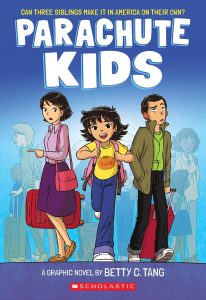
One Book For Nebraska Kids 2024:
Parachute Kids, by Betty Tang (Graphix, 2023).
A middle-grade graphic novel that follows Feng-Li and her siblings as they navigate life alone in a new country. After a fun-filled vacation in California, Mom and Dad announce that the family is staying and enroll the children in school. When their parents’ visas expire, the children are left in their rental house while their parents return to Taiwan to sort out a legal reentry to the United States.
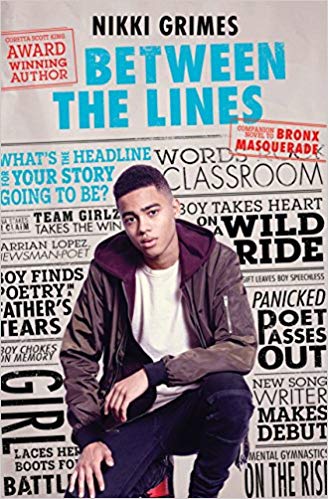
One Book For Nebraska Teens 2024:
Between the Lines, by Nikki Grimes (Nancy Paulsen Books, 2018).
This 2018 companion to Grimes’ Bronx Masquerade combines verse and prose to explore the thoughts, feelings, and struggles of a diverse class of poets as they prepare for their school poetry slam. In addition to honing their writing skills, they find friendship and support in each other.
The Nebraska Library Commission and each Regional Library System will have book sets for the 2023 and 2024 titles to check out to librarians and school media specialists for their book clubs. See our Book Club Kit page, or contact your regional library system directory for details.
Book Club Spotlight – Sitting Pretty

Summer is a great time of year because we get to celebrate so many wonderful communities. First, there is LGBTQ+ Pride and Juneteenth in June, and then now, in July, it’s Disability Pride Month! This month is a time to honor and celebrate the disability community, their history, and their achievements while also acknowledging their struggles on the anniversary of the passing of the Americans with Disabilities Act. Today’s Book Club Spotlight, Sitting Pretty: The View From My Ordinary Resilient Disabled Body by Rebekah Taussig, encompasses disability pride wholeheartedly. Dr. Taussig, who holds a doctorate in Creative Nonfiction and Disability Studies, currently works as a writer and teacher, focusing on “disability representation, identity, and community.”
Sitting Pretty is a memoir in essays focusing on Dr. Taussig’s experience as she navigates the world in her disabled body. When Taussig was four months old, cancer attacked her spine, leaving her paralyzed from the waist down. By age two, Taussig is cancer-free and going about her life as any other kid would; only after noticing how disabled people were portrayed in media and movies (The Hunchback of Notre Dame, Forrest Gump, etc.) did she realize she was different. Seeing how disabilities were represented, mocked, and othered, she learned to resent her body and the special accommodations it needed. Throughout her life, Taussig has had to work immensely hard to unlearn all the negatives she was taught about her body and handle people treating her differently because of her disability, from teaching her first class to navigating how strangers want to comment on her love life. In the essay Feminist Pool Party, Taussig struggles with the ethics of making room in the conversation for disabled people. She wonders if she is a “good enough advocate” or is “too privileged” to be the one talking about it in the first place. But like with any minority group or life experience, no one person encompasses every aspect of the culture. All that matters is that the voice is there, to begin with.
“Maybe when someone’s difference scares you, that’s the precise moment to lean in, shut up, and listen.”
Rebekah Taussig
Books like Sitting Pretty are essential for a multitude of reasons. They teach empathy, humanize a group that is often dehumanized or vilified (i.e., Captain Hook), and raises our awareness of stories unlike ours. And, as Taussig points out, disability can happen to anyone at any time. Car accidents, illness, and normal aging processes are all disabling events, and accessibility focusing on disabled people can only help us in the long run. Book Clubs and Groups shouldn’t shy away from stories like these. While Taussig’s knowledge and ideas come from a place of well-researched and thoughtful academia, her language and ideas are accessible to anyone and show a nuanced approach to the societal “otherness” placed on disabled people. Group discussion will benefit from being able to talk about these themes together and share their own experiences with disabilities, the disability community, or any moment of “otherness” felt from inaccessibility or social stigma.
The reason we are able to hear stories like Taussig’s is because of the amazing disability advocates that came before us. The biggest demonstration that helped spur the passing of the ADA is known as the Capital Crawl in 1990, where about 1000 people with disabilities took to the US Capital, and many, without their mobility devices, crawled up the steps as a physical demonstration of inaccessibility. The youngest activist to participate in the crawl, eight-year-old Jennifer Keelan-Chaffins, has since continued her advocacy, and her illustrated children’s biography All the Way To The Top will be featured this summer through the National Library Service Summer Reading Program!
“So happy disability pride in every flourish and form. Here’s to knowing in our bones – we deserve to be here, too. We are a vital part of all this. The world might still act like you’re holding things up or making things too complicated. But know – you are the best part. You are the piece that changes the whole f- game.
– @sitting _pretty
If you’re interested in requesting Sitting Pretty for your book club, you can find the Book Club Kit Request form here. There are 11 copies available. (A librarian must request items)
Taussig, Rebekah. Sitting Pretty. HarperOne. 2020.
2023 NLS Summer Reading Story Time and Music
Join us on Zoom for an exciting story time and music with Matt Mazur of Turtle Dance Music! Come prepared to have lots of fun with stories, songs, and silly dances.
This event is geared toward K-3rd grade, but all are still welcome.
- Thursday, July 6 at 7:00 pm EDT
- Webinar registration: Story Time and Music
Mark your calendars for the following events happening this summer as part of the NLS Summer Reading program:
- Tuesday, July 11 at 7:00 pm EDT: Author Talk (Middle Grades) – Celia C. Perez, The First Rule of Punk
- Saturday, July 22 at 1:00 pm EDT: Author Talk (K-5th Grade) – Annette Bay Pimentel and Jennifer Keelan-Chaffins, All the Way to the Top: How One Girls’ Fight for Americans with Disabilities Changed Everything
- Thursday, July 27 at 7:00 pm EDT: Author Talk (YA and Middle Grades) – Kwame Alexander, The Crossover
- Thursday, August 3 at 7:00 pm EDT: Author Talk (YA) – Jenny Torres Sanchez, We Are Not From Here
For more information:
Annette Hall
402-471-4033
annette.hall@nebraska.gov
NCompass Live: One Book For Nebraska Kids & Teens 2023
Wouldn’t it be great if kids all over Nebraska were talking about books? Hear about the Nebraska Library Commission & the Regional Library Systems’ program where kids can all read and discuss the same book on next week’s NCompass Live webinar on Wednesday, July 5 at 10am CT.
Join Sally Snyder, the NLC’s Coordinator of Children and Young Adult Library Services, and Aimee Owen, Information Services Librarian, to learn all about the One Book for Nebraska Kids and Teens program. And be the first to hear the 2024 titles that will be announced on this show!
Our 2023 titles are:
- One Book For Nebraska Kids – The Birchbark House by Louise Erdrich
- One Book For Nebraska Teens – Not If I Save You First by Ally Carter.
Upcoming NCompass Live shows:
- July 12 – A Library Centennial Celebration in Photos and Memories
- July 19 – Nebraska Open Meetings Act: 2023 Overview and Updates
- July 26 – Pretty Sweet Tech: Internet Filtering For E-Rate CIPA Compliance And Cybersecurity

To register for an NCompass Live show, or to listen to recordings of past shows, go to the NCompass Live webpage.
NCompass Live is broadcast live every Wednesday from 10am – 11am Central Time. Convert to your time zone on the Official U.S. Time website.
The show is presented online using the GoTo Webinar online meeting service. Before you attend a session, please see the NLC Online Sessions webpage for detailed information about GoTo Webinar, including system requirements, firewall permissions, and equipment requirements for computer speakers and microphones.
Friday Reads: Legends and Lattes by Travis Baldree
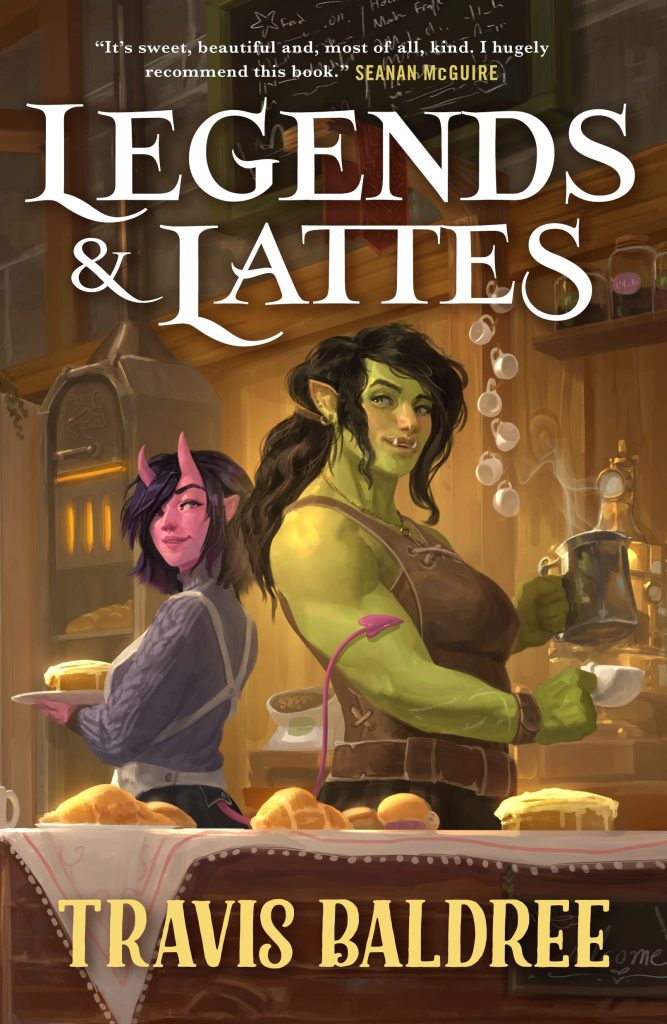
“A novel of high fantasy…and low stakes”
Viv, an Orc Barbarian, is ready to put her mercenary days behind her and hang up her sword for good. Her travels have led her to Thune, where she hopes to open the very first coffee shop in the city (where no one even knows what coffee is).
However, opening a new business alone with just a vague plan proves difficult, even with the help of a magic fortune stone. Old “friends” showing up and Thune’s own dark streets aren’t helping anything either. She’ll need to rely on new friends and partners in order to build this new quiet life of good food and delicious coffee that lasts.
“People just sat around drinking it from these little ceramic cups, and I had to try it, and… it was like drinking the feeling of being peaceful. Being peaceful in your mind. Well, not if you have too much, then it’s something else.
This book is all about found family, the importance of building a community and sense of belonging, and self-reinvention. The process may be difficult, but so worth it. It’s a great slice-of-life sort of story when you need something cozy and heartwarming with some loveable characters (plus some cinnamon rolls and giant cats).
“The combined aromas of hot cinnamon, ground coffee, and sweet cardamom intoxicated her, and as she brewed and smiled and served and chatted, a deep contentment welled up. It was a glowing warmth she’d never experienced before, and she liked it. She liked it a great deal.”
A prequel story, Bookshops & Bonedust, should be out in November 2023.
Baldree, Travis. Legends & Lattes. Cryptid Press, 2022.
#BookFaceFriday “Dear Librarian” by Lydia M. Sigwarth
SHHHH, this is a #BookFaceFriday!
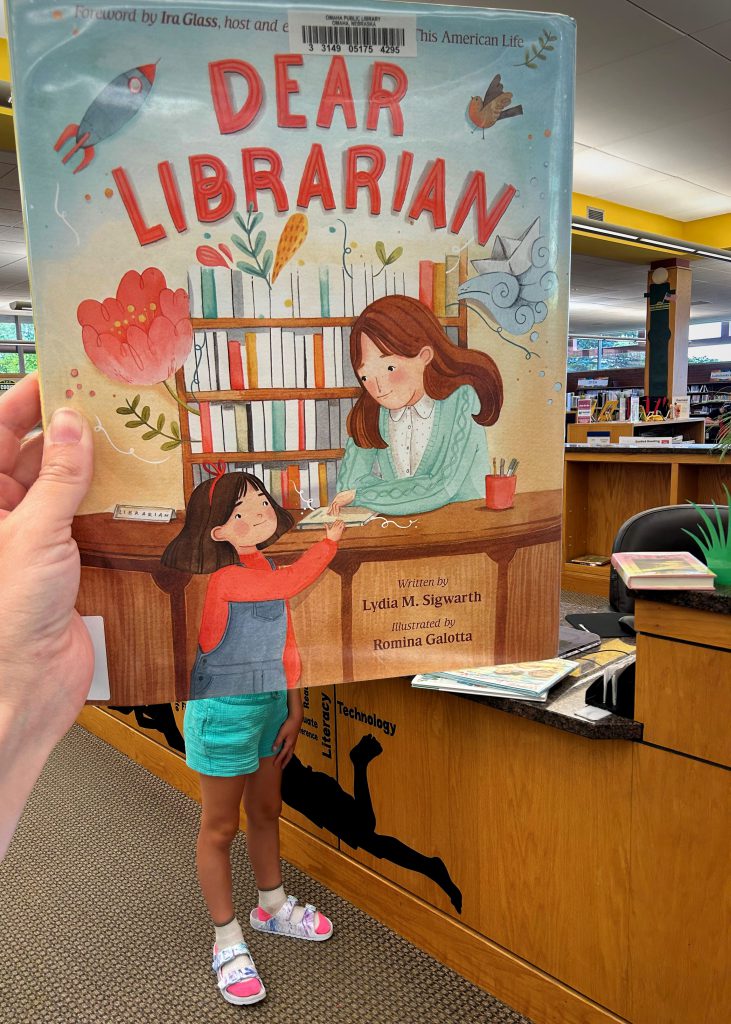
Summer reading is in full swing all over Nebraska! So this week’s #BookFaceFriday is both a shout out to all those amazing librarians that put tons of work into Summer Reading Programs, but also that we have book lists for all ages on Nebraska OverDrive Libraries. “All Together Now: Summer Reading Program 2023” is a specially curated collection great titles that would be perfect picks for Summer Reading. Just like “Dear Librarian” written by Lydia M. Sigwarth and illustrated by Romina Galotta ( Farrar, Straus and Giroux, 2021.) It’s a perfect reminder of everything a library has to offer. It’s available for checkout as an audiobook from Nebraska Overdrive Libraries.
“Galotta uses an array of media, including watercolors and colored pencils, to lovingly reflect the heroine’s inner emotions and thoughts in the details and background on each page . . . This touching story celebrates the joys of friendship, finding a home, and the power of libraries.”
— School Library Journal, starred review
Find this title and many more through Nebraska OverDrive! Libraries participating in the Nebraska OverDrive Libraries Group currently have access to a shared and growing collection of digital downloadable audiobooks and eBooks. 188 libraries across the state share the Nebraska OverDrive collection of 21,696 audiobooks, 35,200 eBooks, and 3,964 magazines. As an added bonus it includes 130 podcasts that are always available with simultaneous use (SU), as well as SU ebooks and audiobook titles that publishers have made available for a limited time. If you’re a part of it, let your users know about this great title, and if you’re not a member yet, find more information about participating in Nebraska Overdrive Libraries!
Love this #BookFace & reading? Check out our past #BookFaceFriday photos on the Nebraska Library Commission’s Facebook page!
2023 NLS Summer Reading Author Talk: Shelby Van Pelt
Join us on Zoom for an exciting author talk with New York Times best-selling author of Remarkably Bright Creatures, Shelby Van Pelt!
This event in the National Library Service Summer Reading Program is specially designed for adults, but all are welcome.
- Thursday, June 29 at 7:00 pm EDT
- Webinar registration: Author Talk – Shelby Van Pelt
Mark your calendars for the following events happening this summer as part of the NLS Summer Reading program:
- Thursday, July 6 at 7:00 pm EDT: Story Time and Music (K-3rd Grade) – Matt Mazur
- Tuesday, July 11 at 7:00 pm EDT: Author Talk (Middle Grades) – Celia C. Perez, The First Rule of Punk
- Saturday, July 22 at 1:00 pm EDT: Author Talk (K-5th Grade) – Annette Bay Pimentel and Jennifer Keelan-Chaffins, All the Way to the Top: How One Girls’ Fight for Americans with Disabilities Changed Everything
- Thursday, July 27 at 7:00 pm EDT: Author Talk (YA and Middle Grades) – Kwame Alexander, The Crossover
- Thursday, August 3 at 7:00 pm EDT: Author Talk (YA) – Jenny Torres Sanchez, We Are Not From Here
For more information:
Annette Hall
402-471-4033
annette.hall@nebraska.gov
#BookFaceFriday “The Women Who Built Omaha” by Eileen Wirth
A bold and remarkable #BookFace!
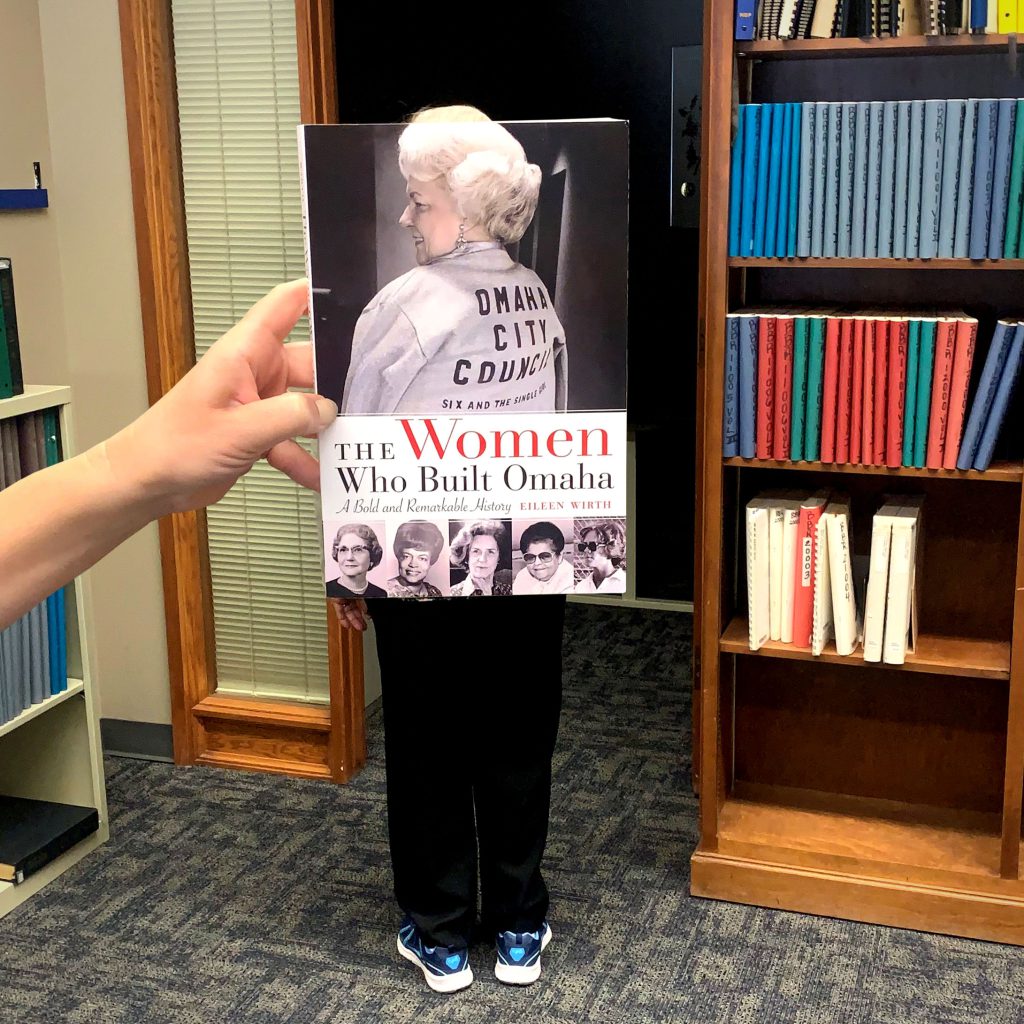
This week’s #BookFaceFriday is new to our collection and is already getting some book club attention! We so appreciate when libraries donate their book club reads to us so we can share them with all of you! One of those recently donated titles is “The Women Who Built Omaha: A Bold and Remarkable History” by Eileen Wirth (Bison Books, 2022), gifted to us by the Kearney Public Library! This title is also available as an ebook in Nebraska OverDrive Libraries. You can find this title and all the new books available on our Book Club Kits page; just look in the Browse Options section and select the Browse New Additions link for our latest reads. Add it to your to-be-read list today!
“An account of feminine accomplishment that goes well beyond the usual portraits of a few well-known society women who made their mark in the shadow of their even better-known husbands. . . . This book shares a wealth of interesting and little-known anecdotes about those women who paved the way to the Omaha of today.”
— Martha Grenzeback
Book Club Kits Rules for Use
- These kits can be checked out by the librarians of Nebraska libraries and media centers.
- Circulation times are flexible and will be based upon availability. There is no standard check-out time for book club kits.
- Please search the collection to select items you wish to borrow and use the REQUEST THIS KIT icon to borrow items.
- Contact the Information Desk at the Library Commission if you have any questions: by phone: 800/307-2665, or by email: Information Services Team
Find this title and many more through Nebraska OverDrive! Libraries participating in the Nebraska OverDrive Libraries Group currently have access to a shared and growing collection of digital downloadable audiobooks and eBooks. 189 libraries across the state share the Nebraska OverDrive collection of 21,696 audiobooks, 35,200 eBooks, and 3,964 magazines. As an added bonus it includes 130 podcasts that are always available with simultaneous use (SU), as well as SU ebooks and audiobook titles that publishers have made available for a limited time. If you’re a part of it, let your users know about this great title, and if you’re not a member yet, find more information about participating in Nebraska Overdrive Libraries!
Love this #BookFace & reading? Check out our past #BookFaceFriday photos on the Nebraska Library Commission’s Facebook page!
Friday Reads: This Is How You Lose the Time War, by Amal El-Mohtar and Max Gladstone
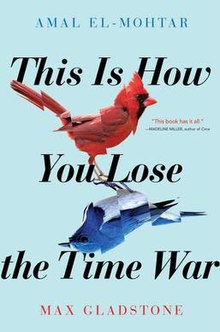
This Is How You Lose the Time War came out in 2019 and won several awards, but there was a resurgence of interest in the novella last month, when the book was a main character on a social media platform for a few days. Suddenly it was sold out everywhere, and libraries that had it in their collections were racking up long reserves lists on it. I’m here to tell you that this book lives up to the hype. Any time is a good time to pick up a good book—when it’s new, when it’s old, when it’s neglected, when it’s all the rage.
This time-traveling, epistolary novella is written by Amal El-Mothar and Max Gladstone. Each author wrote the letters of one character, who was writing to the other character, written by the other author. They had agreed to a general storyline before they started writing the letters to each other’s characters, but each author found the tale grew, delightfully, in the collaborative process.
This Is How You Lose the Time War is a quick and dazzling read, and it’s best if you know as little as possible before you start in on it. It won a Hugo Award in 2020, and a Nebula Award in 2019, and a British Science Fiction Award in 2019 as well. And it’s one of the social media “It” books of 2023. Everyone seems to like it—chances are good you might enjoy it, too.
El-Mohtar Amal and Max Gladstone. This Is How You Lose the Time War. First ed. Saga Press an Imprint of Simon & Schuster 2019.
2023 NLS Summer Reading Kickoff Program
You’re invited to attend the very first National Library Service Summer Reading Program!
It begins on Monday, June 26 with a kickoff event featuring Librarian of Congress, Dr. Carla Hayden, who will welcome everyone and read a picture book for the younger participants. All ages are welcome!
- Monday, June 26 at 4:00 pm EDT
- Webinar registration: Summer Reading Kickoff Event
The kickoff event will be followed by these weekly author talks and story times and music:
- Thursday, June 29 at 7:00 pm EDT: Author Talk (Adult) – Shelby Van Pelt, Remarkably Bright Creatures
- Thursday, July 6 at 7:00 pm EDT: Story Time and Music (K-3rd Grade) – Matt Mazur
- Tuesday, July 11 at 7:00 pm EDT: Author Talk (Middle Grades) – Celia C. Perez, The First Rule of Punk
- Saturday, July 22 at 1:00 pm EDT: Author Talk (K-5th Grade) – Annette Bay Pimentel and Jennifer Keelan-Chaffins, All the Way to the Top: How One Girls’ Fight for Americans with Disabilities Changed Everything
- Thursday, July 27 at 7:00 pm EDT: Author Talk (YA and Middle Grades) – Kwame Alexander, The Crossover
- Thursday, August 3 at 7:00 pm EDT: Author Talk (YA) – Jenny Torres Sanchez, We Are Not From Here
For more information:
Annette Hall
402-471-4033
annette.hall@nebraska.gov
Book Club Spotlight – You’ll Never Believe What Happened to Lacey
Yesterday (June 19th) was the second time in Nebraska’s history that Juneteenth was celebrated as an official state holiday. And to honor the celebrations, today’s Book Club Spotlight features Nebraska Native and host of her own Peacock late-night talk show, Amber Ruffin! Ruffin has talked extensively about Juneteenth, its history, and misconceptions in a fantastic segment on her show called How Did We Get Here, which is absolutely worth the watch. Ruffin has had an incredible career as a comedian, writing for Seth Meyers, the Golden Globes, and of course, The Amber Ruffin show. Her book, You’ll Never Believe What Happened to Lacey, co-authored with her sister Lacey Lamar, a worker in the health and human services field, consists of short but absurd stories recounted by Lamar of racism, from micro to macroaggressions in their hometown of Omaha.
You’ll Never Believe What Happened to Lacey is a collection of real stories told by Ruffin and Lamar, primarily focusing on Lamar’s life as a Black woman in Omaha and the unintentional (or intentional!) racism that she faces daily. While Lamar’s stories can get pretty bleak, the book’s goal is not wholly serious. The stories are wild and addicting, and it’s easy to get sucked in and finish the book in one sitting. The sisters are natural comedians who bounce off each other like they’re gossiping with you about a ridiculous thing that happened to them while getting your nails done together. And that’s part of the goal! To show the absurdity of racism when it’s filed down to the smallest moments of touching a Black woman’s hair to being stopped by the police for skipping down the street. Even the smallest moments build up over a lifetime of experience and paint a larger picture of racism that’s normalized in our culture.
“I have never been able to understand why white people have such a low tolerance for hearing about racism. I mean, we have to live it! The least you could do is nod your head.”
Amber Ruffin
Picked as the 2021 Omaha Reads title, the goal of You’ll Never Believe What Happened to Lacey is different for each reader. For white readers, Ruffin hopes they will walk away with a new perspective on what it’s like to be a modern Black American. And she hopes Black readers will recognize themselves and know they’re not alone. It is both parts, a book of revelation and validation. Their second book, The World Record Book of Racist Stories, is a collection much like You’ll Never Believe. It includes stories from their parents, siblings, and other family members to bring even more laughs and gasps of horror from the wildest things people say and do.
If you’re interested in requesting You’ll Never Believe What Happened to Lacey for your book club, you can find the Book Club Kit Request form here. There are 7 copies available. (A librarian must request items)
Ruffin, Amber; Lamar, Lacey. You’ll Never Believe What Happened to Lacey. Grand Central Publishing. 2021.
Posted in Books & Reading
Tagged Black Voices, book club spotlight, Juneteenth, Nebraska Authors
Leave a comment
#BookFaceFriday “Red Sky Over Hawaii” by Sara Ackerman
Aloha from #BookFaceFriday!
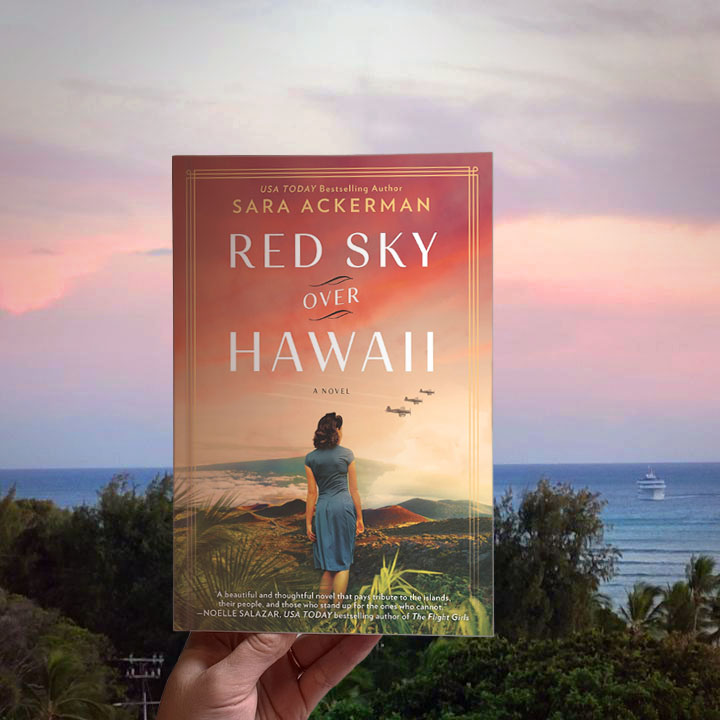
If only we all could have taken a trip for this week’s #BookFace! Luckily our Library Development Director, Christa Porter, helped us out while at the Western Council of State Libraries Annual Meeting in Honolulu. Even if you can’t go to Hawaii, you can always get away with a good read, like this week’s #BookFaceFriday “Red Sky Over Hawaii: A Novel” by Sara Ackerman (MIRA, 2020.) A historical fiction novel set in Hawaii after the attack on Pearl Harbor. It’s available for checkout as an audiobook or ebook from Nebraska Overdrive Libraries. We actaully have five titles by Sara Ackerman available on Nebraska OverDrive Libraries, check them all out today.
“With effortless prose, Ackerman skillfully navigates the early days of WWII with captivating characters bonded by circumstance. Mystery and magic are woven around Lana and the pages of this book, delivering a beautiful and thoughtful novel that pays tribute to the lore of the islands, their people, and those who stand up for the ones who cannot.”
―Noelle Salazar, bestselling author of The Flight Girls
Find this title and many more through Nebraska OverDrive! Libraries participating in the Nebraska OverDrive Libraries Group currently have access to a shared and growing collection of digital downloadable audiobooks and eBooks. 188 libraries across the state share the Nebraska OverDrive collection of 21,696 audiobooks, 35,200 eBooks, and 3,964 magazines. As an added bonus it includes 130 podcasts that are always available with simultaneous use (SU), as well as SU ebooks and audiobook titles that publishers have made available for a limited time. If you’re a part of it, let your users know about this great title, and if you’re not a member yet, find more information about participating in Nebraska Overdrive Libraries!
Love this #BookFace & reading? Check out our past #BookFaceFriday photos on the Nebraska Library Commission’s Facebook page!
Posted in Books & Reading, General
Tagged audiobooks, bookfacefriday, Ebook, libraries, Nebraska OverDrive Libraries, Novel, Reading, Red Sky Over Hawaii, Sara Ackerman
Leave a comment
Friday Reads: The Other Side of the Coin: The Queen, the Dresser and the Wardrobe by Angela Kelly
Judging a book by its cover is one way to select what to read but I have often judged an audio book by its length. Five hours is perfect for a palette cleanser in between longer tomes. Such is the case with this book. Also recommending this selection was the phrase: “fully endorsed by Queen Elizabeth II.” Lastly, the author narrated her book and while this can sometimes be a drawback, Angela, a Liverpudlian, who is conscientious of her accent, spends some time in the book discussing her desire for elocution lessons. The Queen herself takes on this task and this memorable conversation shows the kind of friendship she enjoyed with Her Majesty. Kelly’s slow and precise storytelling reveal her character in a way nothing else could.
Dressing the queen is, as you can imagine, a time laden and rigorous job. Protocol, tradition, regalia, weather, and every kind of unexpected condition you can imagine, make this job rife with problems to solve. Angela began her position as Personal Assistant and Senior Dresser in 1993 and moved on to increasingly more important and intimate tasks until the Queen’s death in 2022. Working with a battalion of milliners, jewelers, perfectly sighted seamstresses, and other palace staff, she shares various wardrobe stories that are quite charming.
For example, did Her Majesty break in brand new shoes? No, Angela, being the same size broke them in for her. And when a hat was hastily shipped for an occasion without being checked or tailored, Angela unpacked it knowing that it wouldn’t flatter Her Majesty and came up with the brilliant solution for her to wear it backwards. When Prince Philip agreed, the Queen acquiesced and it was a success to everyone but perhaps the milliner. How to clean jewelry at the last minute? Gin and water of course. According to Angela, one of the Queen’s secret wishes was to have her photograph taken more casually with her hands in her pockets. Angela created an opportunity and designed a dress for this to happen. The Queen’s face says it all.
Unfortunately, I went looking for the back-story on Angela. To no one’s surprise, the new King evicted her from her semi-detached grace-and-favour cottage. There is speculation that Angela was set to write another book about the queen. Perhaps her royally financed new home, not so close to London, came with a signed agreement to say no more.
After hearing Angela’s story, I can categorically say, this is a job I would not want. Yet, I found it interesting to hear from someone inside the palace who was given permission to share her story.
Kelly, Angela. (2019). The Other Side of the Coin: The Queen, the Dresser and the Wardrobe. Harper.
Lois Lenski Covey Foundation: Bookmobile Grant Program
For more grants like this one, check out the NLC’s Grant Opportunities for Nebraska Libraries at http://nlc.nebraska.gov/grants/index.aspx
Through the Bookmobile Grant Program, the Lois Lenski Covey Foundation awards grants to organizations that operate a lending bookmobile that travels into neighborhoods populated by underserved youth. The grants are for purchasing books published for young people preschool through grade 8, Early Reader books through Young Adult and Hi-Lo books.Bookmobiles operated by charitable [501(c)(3)] and other non-taxable agencies, including public libraries or schools, are eligible. The Foundation provides grants to organizations that serve economically or socially at-risk children, have limited book budgets, and demonstrate real need.
Grants range from $500 to $3000 and are specifically for book purchases, and cannot be used for administrative or operational uses.
A link to a downloadable application and detailed instructions for completing and sending the application are available at the Bookmobile Grant Application webpage.
Application deadline: September 1.
About the Lois Lenski Covey Foundation
The purposes of the Lois Lenski Covey Foundation are to advance literacy and foster a love of reading among underserved and at-risk children and youth. Lois Lenski, celebrated author and illustrator of over one hundred children’s books and the 1946 Newbery medalist for Strawberry Girl, established the Foundation as a charitable institute in 1967. Since then the Foundation has assisted over 400 organizations in their efforts to nurture reading skills, gain access to books, and instill a love of reading.
Posted in Books & Reading, Grants, Youth Services
Leave a comment
Friday Reads: “The Word is Murder: A Novel” by Anthony Horowitz
Anthony Horowitz is the author of over forty-five novels, including the Magpie Murders Series which has been made into a BBC TV series. He’s also a writer for BBC Television including series like Midsomer Murders and Foyle’s War. Horowitz has written this new semi-autobiographical murder mystery series as a new spin off on the Sherlock Holmes and Watson partner dynamics.
Writing himself into the book as the one of the main characters, Anthony Horowitz is a TV writer and author living his life in London when he’s approached by private detective and police consultant Daniel Hawthorne, with the proposition to write about his interesting cases for a new book series. In a very Holmes like way, Hawthorne is brilliant with his deductions but has a personality that is hard to like.
Hawthorne comes with a case, Diana Cowper, the mother of a famous actor with a troubled past has been murdered in her own home, the day before she visited a mortuary to make her own funeral arrangements. As if she knew what was coming or even planned it herself. This unlikely duo will investigate the case together, Horowitz will follow all the twists and turns of the case with Hawthorne leading the way.
The Word is Murder is the first novel in the Hawthorne and Horowitz Mystery Series. There are now three books in the series, including The Sentence is Death and A Line to Kill.
Horowitz, Anthony. The Word is Murder: A Novel. Harper.2018.
#BookFaceFriday “Across the Desert” by Dusti Bowling
Is it hot out here, or is it just #BookFaceFriday?
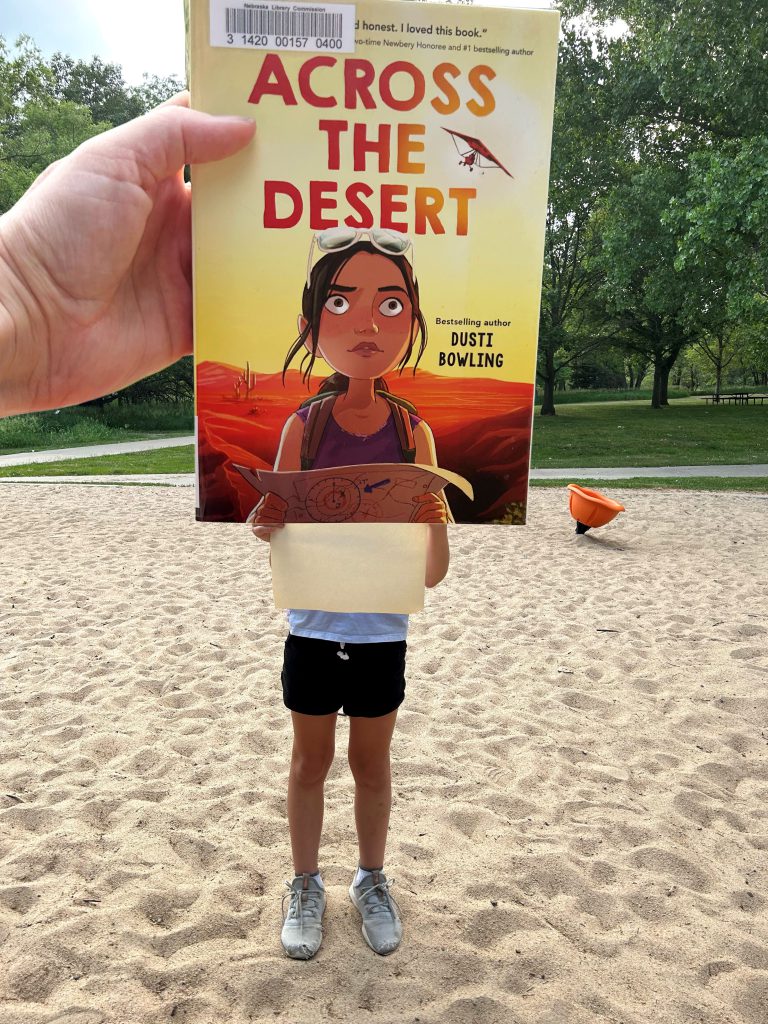
Well, we weren’t able to find a desert for this week’s #BookFace, but we did the best we could. If your kids are looking for a little adventure this summer, look no further! NLC has several great titles in their book club kit collection that would be great for taking their minds all over the world, like this week’s #BookFaceFriday “Across the Desert” by Dusti Bowling (Little, Brown Books for Young Readers, 2023.) A middle-grade action-adventure story, about survival, friendship, and courage. It’s available for checkout as a book club kit or as an audiobook from Nebraska Overdrive Libraries. We have 10 copies available for your library to borrow today! We also have several other titles by Dusti Bowling available on Nebraska OverDrive Libraries, check them all out today.
“Experience has taught Jolene she can only count on herself, and she doesn’t think she counts for much. But when she witnesses her friend’s accident in the desert via live stream, she finds the strength to rescue them both. Across the Desert combines compelling adventure, honesty, danger, and love.”
―Kimberly Brubaker Bradley
Book Club Kits Rules for Use
- These kits can be checked out by the librarians of Nebraska libraries and media centers.
- Circulation times are flexible and will be based upon availability. There is no standard check-out time for book club kits.
- Please search the collection to select items you wish to borrow and use the REQUEST THIS KIT icon to borrow items.
- Contact the Information Desk at the Library Commission if you have any questions: by phone: 800/307-2665, or by email: Information Services Team
Find this title and many more through Nebraska OverDrive! Libraries participating in the Nebraska OverDrive Libraries Group currently have access to a shared and growing collection of digital downloadable audiobooks and eBooks. 188 libraries across the state share the Nebraska OverDrive collection of 21,696 audiobooks, 35,200 eBooks, and 3,964 magazines. As an added bonus it includes 130 podcasts that are always available with simultaneous use (SU), as well as SU ebooks and audiobook titles that publishers have made available for a limited time. If you’re a part of it, let your users know about this great title, and if you’re not a member yet, find more information about participating in Nebraska Overdrive Libraries!
Love this #BookFace & reading? Check out our past #BookFaceFriday photos on the Nebraska Library Commission’s Facebook page!
Book Club Spotlight – Mrs. Dalloway
It is only fitting that we ring in this year’s Pride Month with a book by the incredible modernist writer Virginia Woolf. Born in 1882, she held “an intense belief in the importance of arts and a skepticism regarding their society’s conventions and restraints.” Not one to repress her romantic feelings for other women, Woolf subverted the system of the time by living openly as a queer woman, with her and her husband happily pursuing a non-monogamous lifestyle. While it’s easy to see the tragic figure of Virginia Woolf, who unfortunately took her life in 1941, it’s hard not to be amazed by her persistence in pursuing mundane beauty and wholeness in both her writing career and her social life despite adversity. These sentiments and strengths have always been at the heart of Pride, and in her novel Mrs. Dalloway, we are given front-row seating to these ideals as we revolve around the daily life of London post-First World War.
It’s the middle of June, the war is over, and Mrs. Cassandra Dalloway is getting ready to host a party. As she moves about London to finish her errands, we pass through the lives of others along the way. Sometimes fleeting, sometimes intimate portraits of everyday people as they move past each other, none the wiser. One focus we find ourselves with is in the thoughts of Septimus Smith. Suffering from “shell-shock” (PTSD) after World War 1, he struggles to get through his everyday life after seeing a man he loves die on the battlefield. No longer satiated by poetry and art like before the war, he has become haunted and void of all feelings, much to his distress. As Big Ben chimes along, Mrs. Dalloway, constrained by English society and her own choices, pushes her anxieties aside as she focuses on creating a perfect party. Attempting to balance her need to participate in the world while deeply fearing it. Emotions run high as she meets old lovers—specifically, the adventurous but self-important Peter Walsh and her first love Sally Seton, and she wonders what could have been had she chosen differently. Finally, the day comes to a head when Mrs. Dalloway and Septimus must choose if being constrained by the set social order is worth the pain it causes.
“Mrs Dalloway is always giving parties to cover the silence”
Virginia Woolf
Known for being a subversive writer, Woolf’s Mrs. Dalloway, published in 1925, pioneered how literature can pull back the layers of everyday people to reveal their deep inner worlds. In her hallmark, stream-of-consciousness writing style Woolf produces a respectful depiction of a man going mad from PTSD and criticizes the lack of proper care for veterans. While having no real connection to Mrs. Dalloway, Septimus serves as a counterpoint to her daily exhaustion and disillusionment to an extreme degree. And while the titular Mrs. Dalloway does not struggle in the same way, as a woman, she has had to repress many parts of herself to fit into society and is expected to play the role expected of her to the bitter end. As a result, both characters try to balance wanting to be included in society and life while needing privacy to deal with their turbulent emotions. A novel revolving around the enormity of daily life, Mrs. Dalloway is a beautiful classic to include in any Book Club group, especially for those who enjoy diving deeply into the emotional life of characters and its slow but poetic paces.
If you’re interested in requesting Mrs. Dalloway for your book club, you can find the Book Club Kit Request form here. There are 10 copies available. (A librarian must request items)
Woolf, Virginia. Mrs. Dalloway. Harcourt Inc, Inc. 1925.













